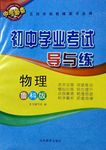题目内容
阅读下面短文,掌握其大意,从每题所给的A、B、C、D四个选项中,选出最佳选项,并在答题卡上将该项涂黑。
Joy to the World
Lights, decorations and Christmas trees filled the stores. Many people were there because Christmas was only two days away.
Thirteen-year-old Joy had just her Christmas shopping. She knew her parents, grandparents so well that finding them was a piece of cake.
Joy went out of the store and came across her classmate, Nick, the least student in school because he wore strange clothing and he had a face only a mother could love.
“What are you doing for Christmas?” said Nick with a smile that showed all his yellow teeth.
“I’m opening presents and having dinner with my ,” said Joy, trying to be polite. “What about you?”
“My parents are away,” he said. “I live with my uncle, who doesn’t like me very much.”
Joy wasn’t sure how to , so she said goodbye with an awkward smile. She felt sorry for Nick since he must feel . But that wasn’t really her problem.
On Christmas Eve, Joy’s family were busy around for the holiday. Joy’s parents were cooking in the kitchen. Joy was a child for holiday cheer, dancing the house.
After dinner, the family into their car and headed to church for the Christmas Eve service. When they walked into the old building, they were by the flow of beautiful songs. A man stood up with Bible and the story Joy had learned on her mother’s knee. It was about a baby named Jesus who came to live on Earth to help people who him.
Joy’s thoughts kept turning back to Nick. It must be to be lonely on Christmas, a day that celebrated God’s Son coming to Earth. Tears started to run down her , but she brushed them away.
Joy lay awake that night everyone else was sleeping like a baby. She was thinking ways to help Nick. As soon as she heard parents get up, she out of bed. She found them in the kitchen and told them about Nick. Then she asked, “Can we him over today?” “Sure,” said her mother, who was always happy when came. Her father smiled.
When Joy called Nick later that day, he was excited. After getting his uncle’s , he joined them for dinner. To her surprise, Joy enjoyed spending time with him.
Joy came to understand Christmas cheer is a joy to Nick, even to the whole world.
1.A. mentioned B. finished C. prepared D. remembered
2.A. presents B. trees C. lights D. toys
3.A. smart B. brilliantC. popular D. interesting
4.A. friends B. classmates C. colleagues D. family
5.A. remind B. respondC. command D. correct
6.A. surprised B. happy C. lonely D. guilty
7.A. applying B. preparing C. calling D. paying
8.A. beyondB. for C. on D. around
9.A. piled B. looked C. ran D. flew
10.A. surroundedB. heard C. frightened D. introduced
11.A. repeatedB. made C. recorded D. read
12.A. attendedB. taught C. helped D. needed
13.A. unexpectedB. joyful C. terrible D. delighted
14.A. head B. cheeks C. eyes D. mouth
15.A. if B. since C. while D. because
16.A. jumped B. ran C. kept D. took
17.A. invite B. requestC. please D. let
18.A. classmatesB. guests C. teachers D. leaders
19.A. appreciationB. consideration C. punishment D. permission
20.A. enjoying B. getting C. sharing D. creating
 七星图书口算速算天天练系列答案
七星图书口算速算天天练系列答案 初中学业考试导与练系列答案
初中学业考试导与练系列答案

